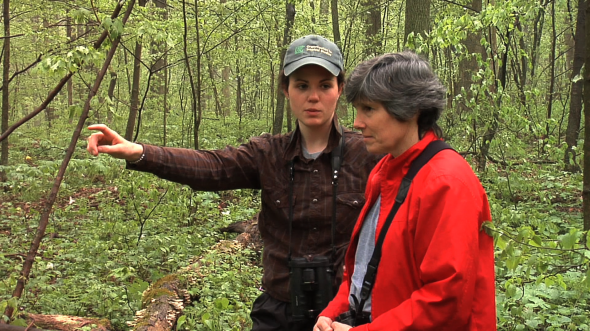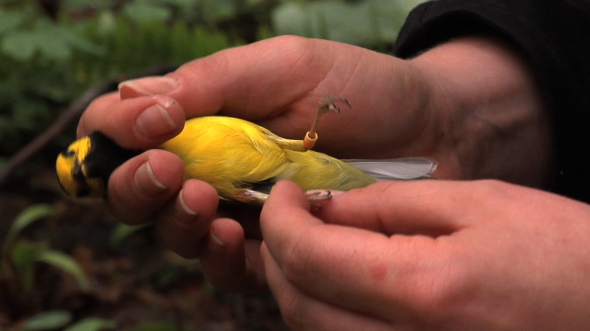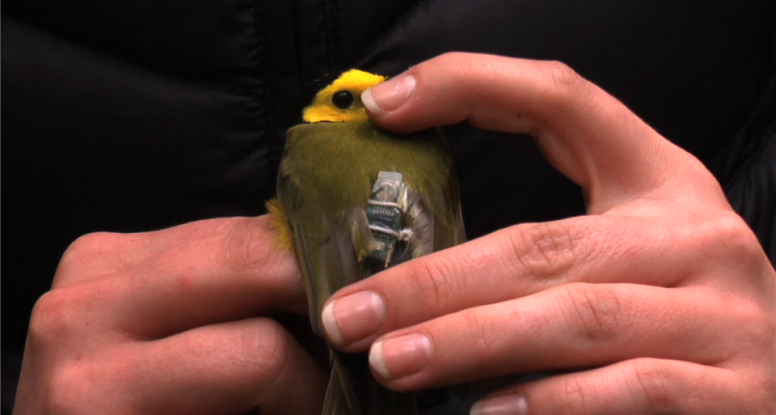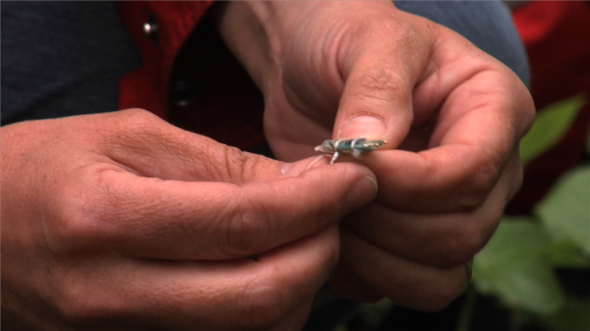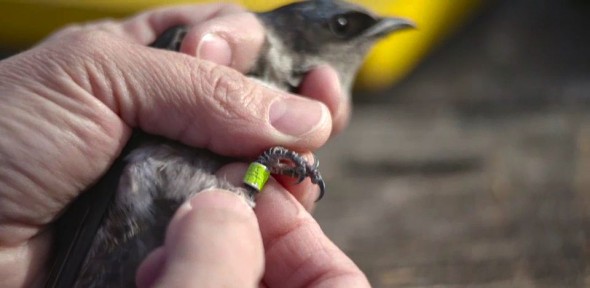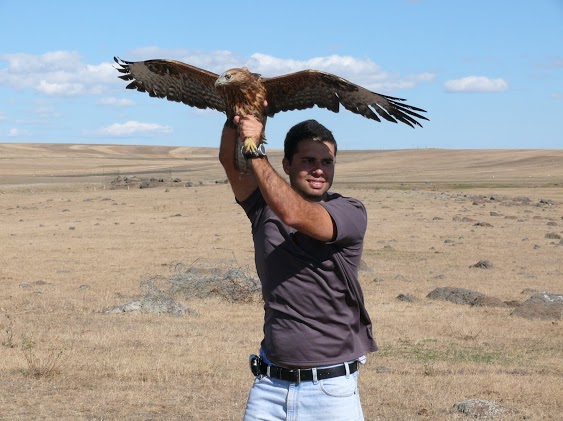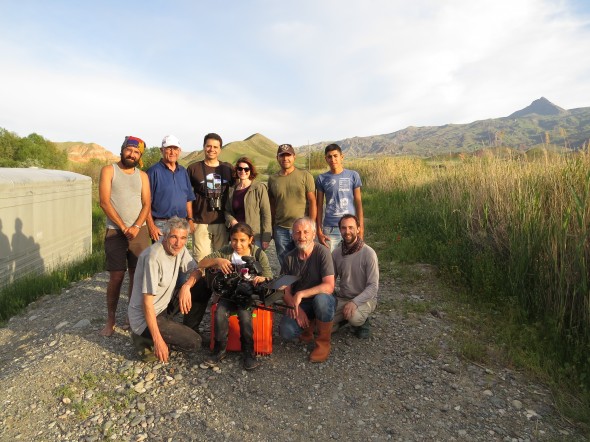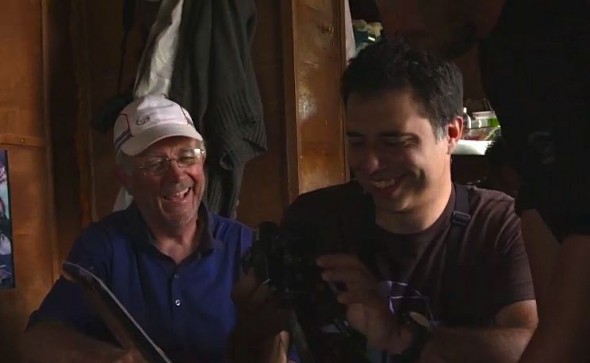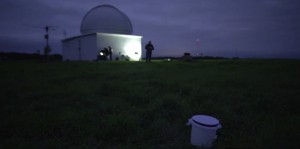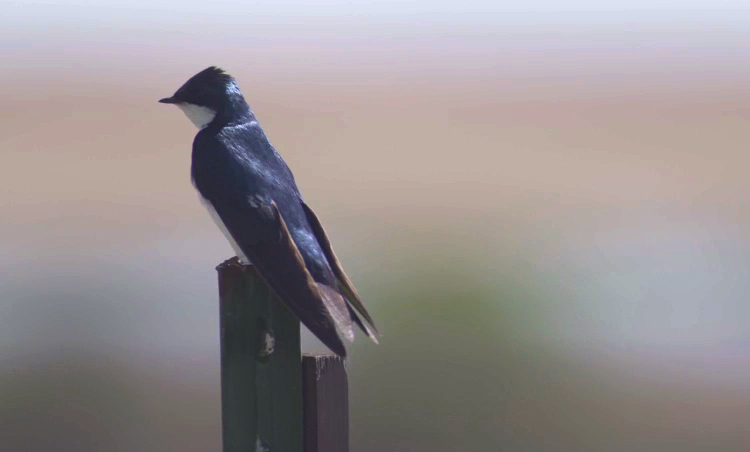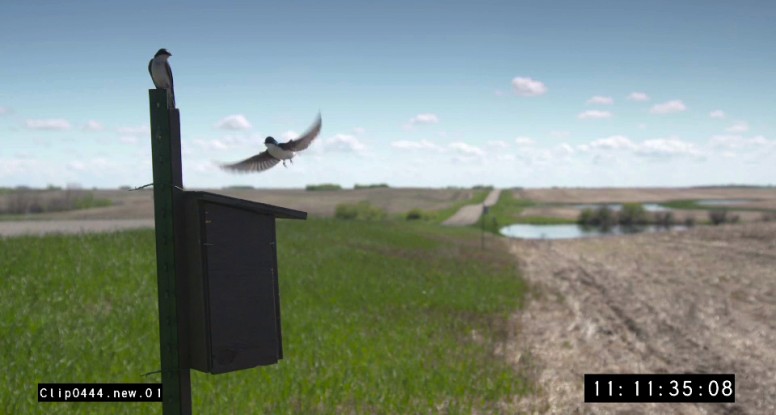Dr. Bridget Stutchbury, Ornithologist and author (Silence of the Songbirds) was one of the first scientists to use light logger geolocators to track tiny songbirds. Watch this exclusive SongbirdSOS video of Bridget retrieving a geolocator from a Hooded Warbler for the first time.
Bridget told us how it came about…
I started tracking migratory songbirds in 2007, after discovering that light-logger geolocators had been miniaturized to only 1.5g by the British Antarctic Survey. For the first time ever it was possible to attach this device to songbirds and, if they returned the next year, re-construct their start-to-finish migration routes and timing. At this size it was only safe to track relatively large songbirds that weighed over 50 grams but most songbirds weigh far less than 50 grams. As with any technology, the geolocators were soon made even smaller, allowing researchers to track smaller songbirds.
In 2010 I had the good fortune to test the smallest tags at that existed at that time (0.6g). The tags were built by James Fox from the British Antarctic Survey. I wanted to know if it was possible to track warblers, which typically weigh less than 15g. In the spring of 2010, after receiving permission from the US Banding Lab to do a pilot study, I caught five Hooded Warblers at my long-term study site in northwestern Pennsylvania. It was with some trepidation that I gave these little birds a relatively large piece of luggage to carry for the next year. I followed them carefully over the next months to make sure they were healthy.
You could not tell that a male Hooded Warbler was carrying a geolocator unless you happened to get a really good look at his back. They sang vigorously, chased other males, mated with their females, and all five males successfully raised a family. That August, just before they were about to depart for their winter-time migration, I recaptured three of the males and I was pleased to notice that their weight was healthy and that they were moulting their feathers normally.
Then came the long nine month wait. The next year two of the five males returned to re-claim their territories in May and seemed no worse for the wear. Amazingly, Director Su Rynard and her SongbirdSOS documentary crew was there when we captured the first warbler ever tracked with a geolocator! After analyzing the light data I discovered that this bird, 2430-41205, had flown south to the Florida panhandle, across the Gulf of Mexico, and spent the winter in central Nicaragua. In spring, he flew up to the Yucatan peninsula, across the Gulf of Mexico and up the Mississippi River valley back to his exact same 100m x 100m territory in Pennsylvania. Even after tracking several hundred songbirds, I still find it amazing that such a small bird can travel so far and with pinpoint accuracy.
What become of this infamous bird? Bridget’s colleague Dr. Ron Mumme from nearby Allegheny College has been studying Hooded Warblers in her backyard forest ever since. He reports that this bird survived to make a second round-trip the next year and again nested successfully, although he has not been seen since.
The second Hooded Warbler Bridget tracked also wintered in Nicaragua and has nested on the same breeding territory every year since 2010. He was at least two years old when first banded, which means he’s flown the 7000 kilometre round-trip at least four times in his lifetime for a total of 28 000 kilometres!! He wasn’t spotted in 2014, and a new male has laid claim to his territory.
Bridget reminds us that Aristotle believed that migratory swallows buried themselves in the mud over the winter like frogs. In many ways that seems far more likely than a little 12 gram bird flying over half-way across the globe.

